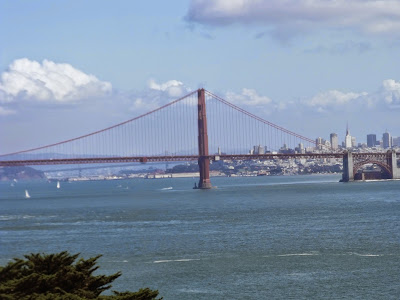Point St. George Wildlife Area
Being birders, we got up at an ungodly hour and drove to the wind swept sea cliffs of Point St. George near Crescent City, California. It was dark as we sat in the car and discussed which birds we might see. A poor homeless man was sleeping in his car next to us in the parking area to this birding site. Our movement and our lights woke him up and he suddenly drove away. We do not usually interact with the strange people we meet while birding. We leave them alone and we wish to be left alone.
The Wind
The wind was cool with heavy gusts. We stood on top of a huge grassy butte which stretched out into the ocean. The birds were just waking up among the rocks and sand beaches below. We used our spotting scope on top of the hill to identify birds. The one of us with the scope would holler diagnostic descriptions to the one with the bird guide, yelling over the sound of the wind. The wind was never so strong that it disturbed the balance of our spotting scope. On some birding trips, one of us has to hold down the legs of the spotting scope to steady the scope and keep the view of the bird through the scope from vibrating violently. The wind this morning was very strong. Robert needed a muffler for his neck. Berry thought gloves would have been a good idea.
Bewick's Wren
- Western Sandpiper
- Bewick’s Wren
- Black Turnstone
- Surf Bird
- American White Pelican
- Brown Pelican
- Western Gull
- Black Oystercatcher
- Double Crested Cormorant
- American Coot
- Red Necked Grebe
- European Starling
- Brewer’s Blackbird
- Common Raven
- Great Blue Heron
- Turkey Vulture
Lunch in Weaverville
After eating breakfast at the hotel, we said goodbye to the Pacific Ocean and headed east toward the mountains and into the large forests of north central California. Again, we encountered the narrow, winding roads talked about in an earlier post. We had lunch in the small mountain town of Weaverville. Robert ordered chili with onions rings, only to discover too late that there was no meat in the chili. Berry had an open faced turkey sandwich. We kept driving and came to the the Trinity River and its reservoir behind a dam in the Shasta-Trinity National Forest. The drought in the western United States is severe. Here are some photos of the reservoir so low that the boat ramp is out of the water. Thirty feet out of the water.
Lewiston Lake
The river below the dam had plenty of water. Berry found a boat ramp with blackberries and a wild apple tree. The birding here was fantastic with many interesting birds. We finally saw the Bald Eagle right above our car. We saw three Mute Swans in Lewiston Lake in California, that is one yesterday and three today. We kept checking the identification of each of these very carefully, because none of them are supposed to be here. Our life bird of Lewiston was the Bullock’s Oriole.
- Canada Goose
- Bullock’s Oriole
- Common Merganser
- Yellow Rumped Warbler
- Mute Swan
- Scrub Jay
- Great Egret
- Bald Eagle
- Red Shafted Northern Flicker
Redding
Our day ended in Redding, CA. There Robert bought a pair of tennis shoes and Berry replaced a leaky styrofoam cooler. We are both exhausted. We just birded the northern California coast from San Francisco to Crescent City and next we will bird our way back down the center of the state. Thanks for enjoying our birding adventures with us.
Robert and Berry
photos courtesy of wikipedia, bshelton






















